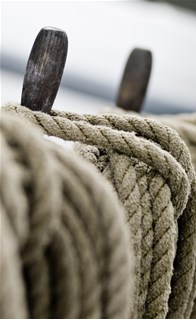|
By: Jeroen Berger, August 8, 2017 Greening the inland waterway transport. Most of the entrepreneurs in the inland waterway transport sector are aware of the fact that the society, government and customers are demanding it more and more. Although greening the inland waterway transport is being increasingly embraced, there are still questions from the market. What are the requirements of an inland waterway vessel now and for the future? And if you decide to greening your business, what could be the business case?
Greening the inland waterway transport, why exactly?
The purpose of greening the inland waterway transport sector is that the environment and the economy could go hand-in-hand. The emissions will be an increasingly important economic factor and more and more contracting authorities will ask for environmentally friendly transport. This applies not only for the inland waterway transport, but for the whole transport chain. As a result of this, there is a strong need arises to an overview of the emission problems and possible solutions.
Regulation
The starting point for regulation of the inland waterway transport is realizing a clean inland waterway fleet. This means reducing the emissions and fuel consumption. Because the diesel engine is the most widely used engine for the inland waterway transport, there are more environmental regulations for this type of engines.
If we are focusing on the European inland waterway transport sector, the non-road mobile machinery (NRMM) Stage V standards are effective from 2019 for new engines.
Future regulation
At the Paris climate conference (COP21) in December 2015, almost 200 countries adopted a new binding global climate deal. In the so-called Paris Agreement they have agreed a long-term goal of keeping the increase in global average temperature to well below 2°C above pre-industrial levels by reducing the greenhouse gases. The aim is to limit the increase to 1.5°C. Carbon dioxide (CO2) is hereby the most important greenhouse gas.
Although the shipping sector is not included in the Paris Agreement, this sector is a major emitter of CO2. According to the roadmap from the European Commission’s Directorate General for Mobility and Transport (DG MOVE ), published on 7 April 2016, the EU aims to reduce the CO2 emissions to 30% (compared to 2005) for the inland waterway transport sector by 2030. It is expected that there will come regulation for the inland waterway transport sector to reduce the carbon footprint too.
Try forward thinking
In general, binding (new) legislation is the driver of greening the business. You can wait until the regulation will enter, but you can also choose for forward thinking. To meet the European environmental objectives in 2030, for example you can choose for the step-by-step approach, where you invest yearly in green technologies to spread your costs, instead of waiting until the regulation will enter.
Which techniques are available?
Although engine manufacturers like Volvo, MAN, Wärtsilä, Caterpillar and Scania are developing more clean diesel engines, there are green alternatives available. Good examples include liquefied natural gas (LNG), biofuels, diesel electric driven (hybrid) and a fuel cell where hydrogen is used as fuel. Although LNG will be seen as the fuel of the future, GTL looks like a good alternative for the inland waterway transport. But also diesel engine after treatment techniques like a SCR catalyst and a diesel particulate filter (DPF), a waste heat recovery system and water-in-oil emulsion can be seen as good alternatives.
Besides that, you can optimize your hybrid, electric or diesel driven propulsion concept, to reduce your fuel costs and carbon footprint. By using Computational Fluid Dynamics (CFD) techniques, you are able to analyze the hydrodynamic performance for optimizing your inland waterway vessel. Good examples of areas which can be improved, are: the hull form (fore and aft part of the ship) and appendages (ship propeller, ship rudder and a possible nozzle).
Will you have a better charter preference with a green inland waterway vessel?
We have asked ourselves the question whether a green inland waterway vessel will lead to a better charter preference. To answer the question, we went into meeting with various inland waterway entrepreneurs. Based on these conversations, we see that having a clean inland waterway vessel could give you a charter preference in many cases. Because of this, you are able to optimize your annual occupancy rate for generating more revenues.
Do you think of greening your inland waterway vessel too? We will be pleased to advice you.
| |
| |
|
Your information will be kept confidential. See our privacy policy for more information. |
Greening the inland waterway transport




